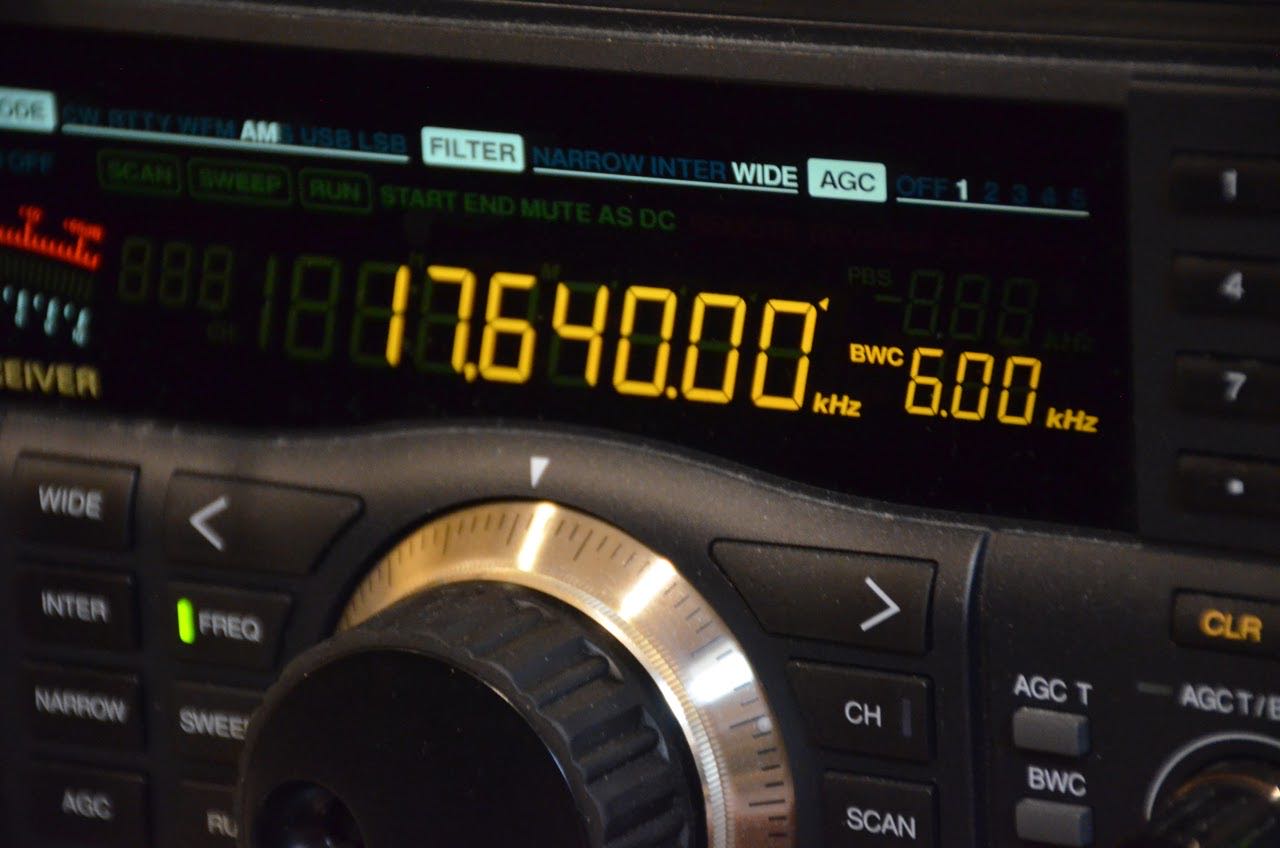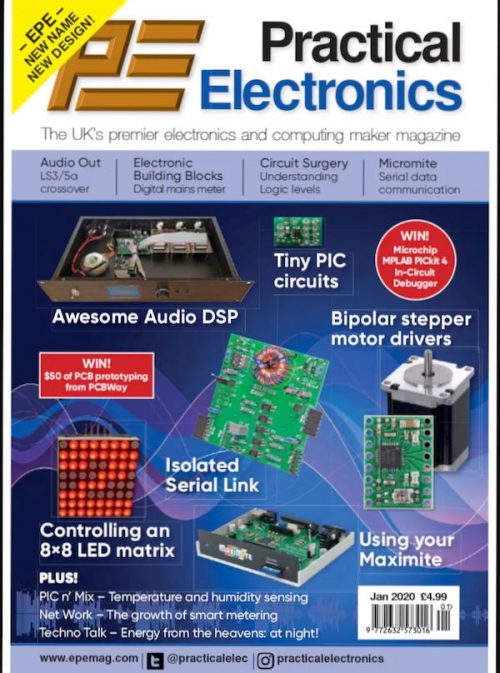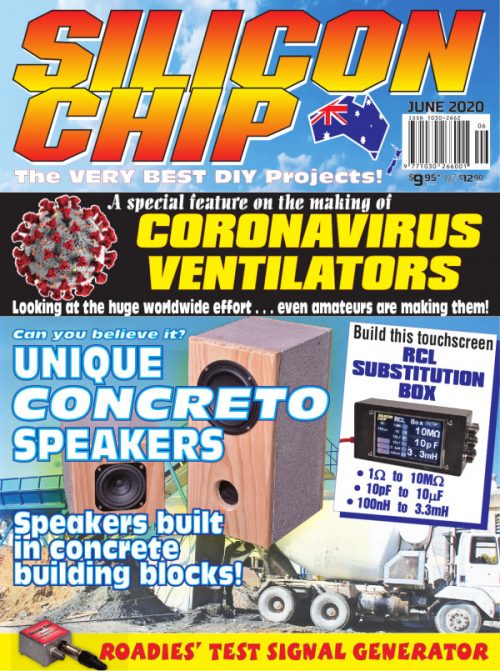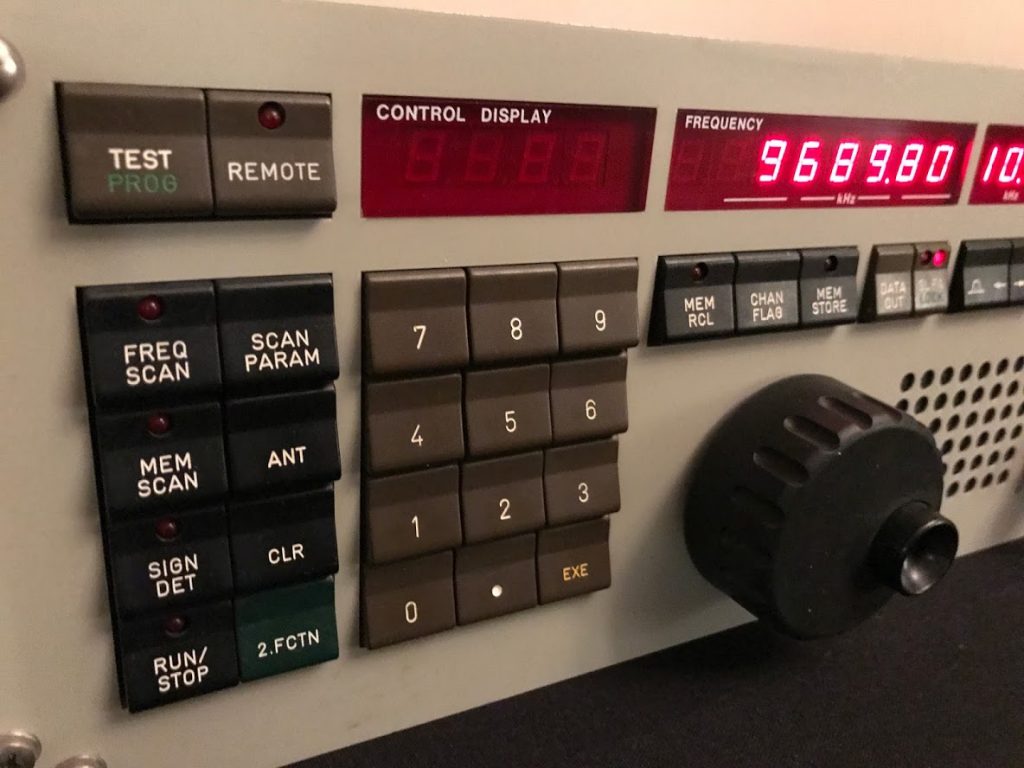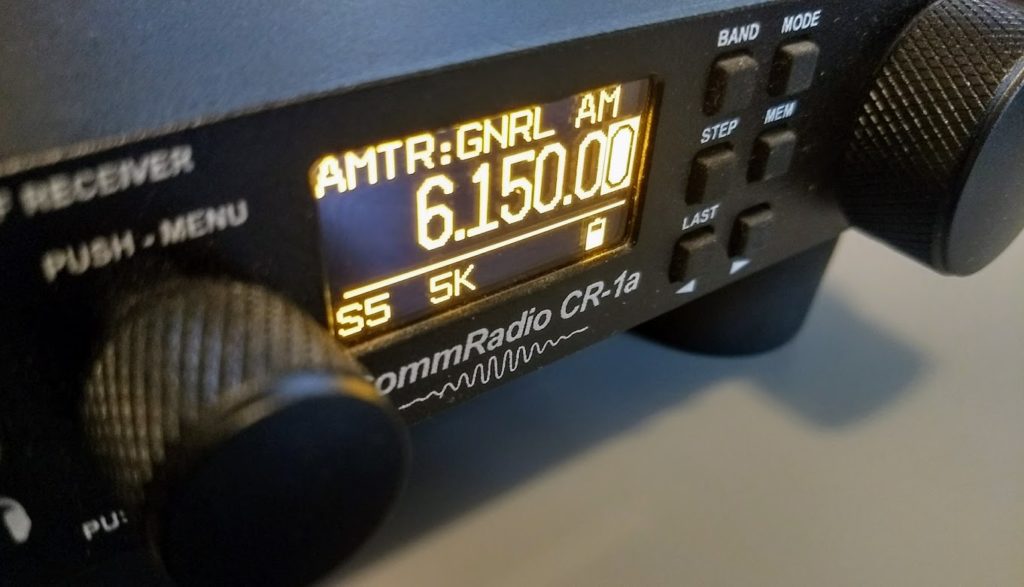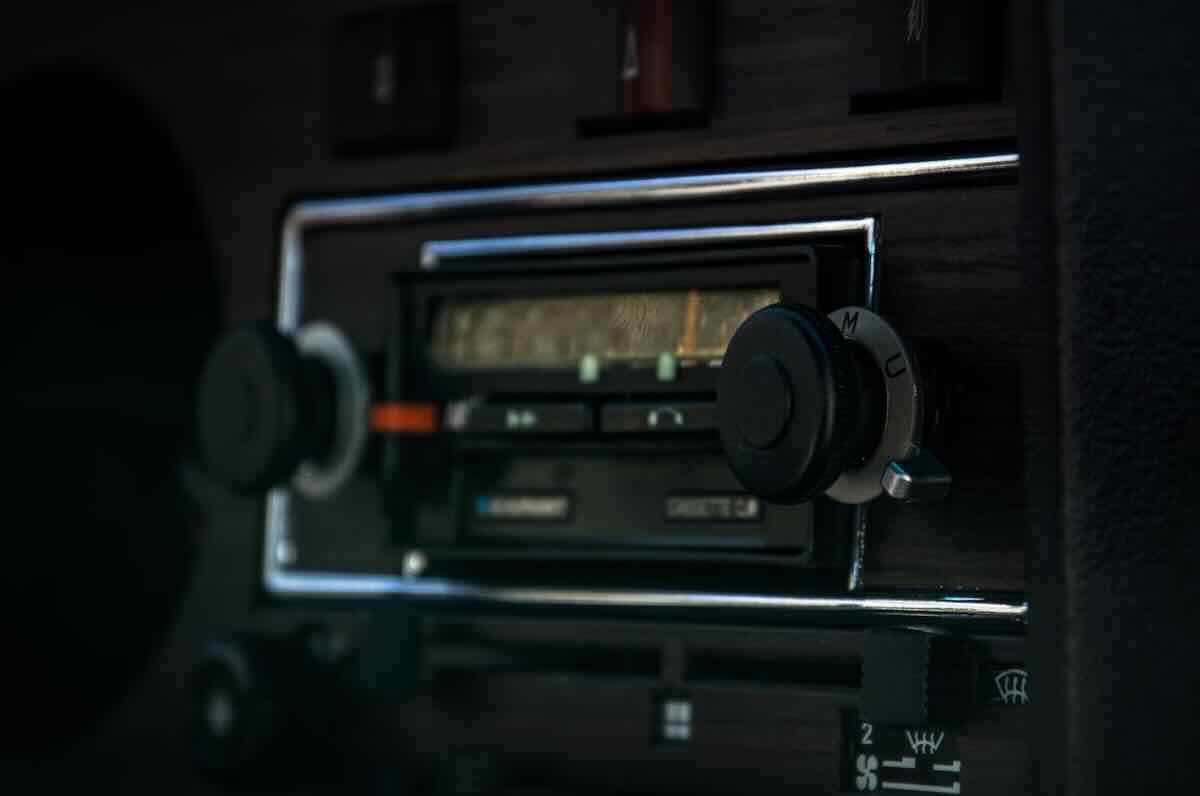 Many thanks to SWLing Post contributor Dennis Dura for sharing this fascinating Nuts & Volts article exploring the history of FM radio in American automobiles. While AM dominated dashboards for decades, FM began to make its way into U.S. cars in 1958, slowly changing how drivers listened to music and news on the road. The piece traces the industry’s hesitations, the technical challenges, and the cultural shift that followed. You can read the full story here:
Many thanks to SWLing Post contributor Dennis Dura for sharing this fascinating Nuts & Volts article exploring the history of FM radio in American automobiles. While AM dominated dashboards for decades, FM began to make its way into U.S. cars in 1958, slowly changing how drivers listened to music and news on the road. The piece traces the industry’s hesitations, the technical challenges, and the cultural shift that followed. You can read the full story here:
Tag Archives: Nuts and Volts
Radio Waves: DRM Part of BBC Story, Antennas and Smith Charts, Shortwave “Hot Debate,” Carrington Event, and “Deep Freeze”
Radio Waves: Stories Making Waves in the World of Radio
Welcome to the SWLing Post’s Radio Waves, a collection of links to interesting stories making waves in the world of radio. Enjoy!
DRM Is Part of the BBC World Service Story (Radio World)
The iconic broadcaster has been supportive of the standard for over 20 years
The author is chairman of the DRM Consortium. Her commentaries appear regularly at radioworld.com.
Our old friend James Careless studiously ignores DRM once more in his well-researched, but to our minds incomplete article “BBC World Service Turns 90” in the March 30 issue.
As an ex-BBC senior manager, I would like to complete the story now that the hectic NAB Show is over.
Having lived through and experienced at close quarters the decision to reduce the BBC shortwave about 20 years ago, I can confirm that the BBC World Service decision to cut back on its shortwave footprint — especially in North America, where reliable, easy-to-receive daily broadcasts ceased — has generated much listener unhappiness over the years.
In hindsight, the decision was probably right, especially in view of the many rebroadcasting deals with public FM and medium-wave stations in the U.S. (and later other parts of the world like Africa and Europe) that would carry news and programs of interest to the wide public.
But BBC World Service in its long history never underestimated the great advantages of shortwave: wide coverage, excellent audio in some important and populous key BBC markets (like Nigeria) and the anonymity of shortwave, an essential attribute in countries with undemocratic regimes.
BBC World Service still enjoys today about 40 million listeners worldwide nowadays. [Continue reading…]
The Magic of Antennas (Nuts & Volts)
If you really want to know what makes any wireless application work, it is the antenna. Most people working with wireless — radio to those of you who prefer that term — tend to take antennas for granted. It is just something you have to add on to a wireless application at the last minute. Well, boy, do I have news for you. Without a good antenna, radio just doesn’t work too well. In this age of store/online-bought shortwave receivers, scanners, and amateur radio transceivers, your main job in getting your money’s worth out of these high-ticket purchases is to invest a little bit more and put up a really good antenna. In this article, I want to summarize some of the most common types and make you aware of what an antenna really is and how it works.
TRANSDUCER TO THE ETHER
In every wireless application, there is a transmitter and a receiver. They communicate via free space or what is often called the ether. At the transmitter, a radio signal is developed and then amplified to a specific power level. Then it is connected to an antenna. The antenna is the physical “thing” that converts the voltage from the transmitter into a radio signal. The radio signal is launched from the antenna toward the receiver.
A radio signal is the combination of a magnetic field and an electric field. Recall that a magnetic field is generated any time a current flows in a conductor. It is that invisible force field that can attract metal objects and cause compass needles to move. An electric field is another type of invisible force field that appears between conductors across which a voltage is applied. You have experienced an electric field if you have ever built up a charge by shuffling your feet across a carpet then touching something metal … zaaapp. A charged capacitor encloses an electric field between its plates.
Anyway, a radio wave is just a combination of the electric and magnetic fields at a right angle to one another. We call this an electromagnetic wave. This is what the antenna produces. It translates the voltage of the signal to be transmitted into these fields. The pair of fields are launched into space by the antenna, at which time they propagate at the speed of light through space (300,000,000 meters per second or about 186,000 miles per second). The two fields hang together and in effect, support and regenerate one another along the way. [Continue reading…]
Smith Chart Fundamentals (Nuts & Volts)
The Smith Chart is one of the most useful tools in radio communications, but it is often misunderstood. The purpose of this article is to introduce you to the basics of the Smith Chart. After reading this, you will have a better understanding of impedance matching and VSWR — common parameters in a radio station.
THE INVENTOR
The Smith Chart was invented by Phillip Smith, who was born in Lexington, MA on April 29, 1905. Smith attended Tufts College and was an active amateur radio operator with the callsign 1ANB. In 1928, he joined Bell Labs, where he became involved in the design of antennas for commercial AM broadcasting. Although Smith did a great deal of work with antennas, his expertise and passion focused on transmission lines. He relished the problem of matching the transmission line to the antenna; a component he considered matched the line to space. Continue reading
Radio technology magazines both online and in print
Many thanks to SWLing Post contributor, Mangosman, who writes:
There used to be magazines like Radio Electronics (USA), Practical Wireless (UK), Radio Television and Hobbies (Australia) and other magazines on electronics were sold in shops and on subscription for money which paid their writers. The internet has killed most of these magazines. There are still a few still in publication that I know of:
- Australia: Silicon Chip and Diynode
- UK: Practical Electronics and Electronics World
- Netherlands: Elector
- USA: Nuts And Volts
There are other Amateur radio magazines as part of membership.
Silicon Chip
Silicon Chip magazine publishes an extensive range of electronics projects every month including many which use Arduino, Raspberry Pi and Australia’s own very popular Micromite/Maximite microcontrollers. These projects are conceived, developed, constructed, written, photographed published and any unusual parts are sold on the magazine’s website by professional people who are paid by sales of the magazine.
Whether you’re into the latest digital electronics or prefer restoring vintage radios, or anywhere in between, we have something to interest you.
Of particular interest to radio enthusiasts are;
New W-I-d-e-b-a-n-d RTL-SDR Modules Part 1 and Part 2 where the performance of the available modules are measured and compared by Jim Rowe. Some modules will not work at all below 30 MHz but will above. Sensitivity dropped off at different frequencies depending on the module. Jim has the testing knowledge because he constructed his own version in 2013. Also check out Using the SiDRADIO to receive DRM30 and More Reception Modes for the SiDRADIO.
More recently they published a touch screen DAB+/FM/AM radio construction project.
The online subscription rate is $Au 85 (= $US 56.29 = € 51.12 = £ 45.88) at the moment for a year of 12 magazines. Individual articles are also available. GST is an Australian Goods and Services Tax.
The above magazines produce their own content rather than just promote a manufacturers’ product.
Many thanks for the suggestions, Mangosman! I imagine there are a number of electronics magazines still in publication in other languages, too. Readers, please comment if you subscribe to a quality publication not mentioned above.
I would also note that if you would like to read archived/vintage copies of electronics and radio magazines–some dating back to the early 20th century–explore the American Radio History website.
Radio Waves: Eugène Aisberg, Filter Design, ABC Workers Face Cuts, and Data via Web SDRs
 Radio Waves: Stories Making Waves in the World of Broadcasting
Radio Waves: Stories Making Waves in the World of Broadcasting
Because I keep my ear to the waves, as well as receive many tips from others who do the same, I find myself privy to radio-related stories that might interest SWLing Post readers. To that end: Welcome to the SWLing Post’s Radio Waves, a collection of links to interesting stories making waves in the world of radio. Enjoy!
Many thanks to SWLing Post contributors Paul, Marty, and Michael Bird for the following tips:
Eugène Aisberg, Radio Writer (OneTubeRadio.com)
After a wartime absence, the January 1946 issue of Radio Craft carried an article by writer Eugène Aisberg. While that name might not be familiar to American readers, Aisberg was a prolific author in the early days of radio, and wrote some of the best treatises on radio for the popular audience. He was fluent in French, Esperanto, German, Russian, and English.
Aisberg was born in Odessa, Ukraine, in 1905, and lived most of his life in France. He was the director of the French magazine Toute la Radio and a prolific author of a number of books. His most popular book, which is still in print, is La Radio? Mais c’est très simple (Radio? But It’s So Simple!) The book, currently in its 29th edition, an extremely solid background covering all aspects of electronics, and is written in a popular, easy-to-read style. While the book was ultimately translated into several languages, it was apparently never published in English.[…]
Filter Design Software (Nuts and Volts)
If you’ve ever lived close to an AM broadcast station, you probably experienced the phenomenon known as fundamental overload. It occurs when a receiving device is functioning entirely properly but unable to reject a strong signal. The receiver might be a wireless telephone, a scanner, or even a TV or radio receiver. The AM signal is completely legal but just too strong, disrupting the function of the receiver or overriding the desired programming.
[…]Hams often experience fundamental overload on the 160 meter band (1.8–2.0 MHz) which is adjacent to the AM broadcast (BC) band (550 kHz–1.7 MHz). Antennas for those frequencies pick up a lot of AM band RF, overloading the input circuits and creating distortion or false signals inside the receiver. The usual solution is to install a high-pass broadcast-reject filter at the receiver input, attenuating the unwanted AM signals below 1.6 MHz while passing the desired 160 meter signals with little attenuation.
So far, so good, but a filter that doesn’t attenuate signals very much above 1.8 MHz while attenuating them significantly in the adjacent broadcast band is not a simple thing to design. There are tables and equations, but they are tedious to work with. Practically, you’ll need to build the filter with standard-value components as well, and that will affect filter performance too. Sounds like a job for some filter design software, doesn’t it?
There are several filter design software packages ranging from simple calculators to sophisticated CAD programs. Luckily for hams and other experimenters, there are plenty of free or low-cost programs to try.[…]
ABC workers face anxious wait over job, program cuts (The Age)
David Anderson did not mince words at a Senate Estimates hearing last October. “There will be job losses,” ABC’s managing director warned. “It’s not something I can quantify at this point in time. There’s still more work to be done.”
Towards the end of March, Anderson will reveal a five-year plan for the national broadcaster. To the frustration of staff, it’s unlikely to specify which parts of the organisation will bear the brunt of these cuts or how many workers they might lose.
Several senior sources spoke about the situation at ABC on the condition of anonymity, given sensitive funding negotiations are yet to be finalised.
“All these media reports claiming the redundancy numbers will be finalised in March are just wrong,” says one ABC executive. “What we need is some clarity [about long-term resourcing] from the government.”[…]
Receiving Data With Web Based Shortwave Radios (Nuts and Volts)
Your computer and the Internet give you free access to over 100 web based shortwave receivers that you can use as if they were your own. Unfortunately, employing these radios to decode data transmissions can be very difficult or impossible — unless you know the secret. So, read on and we’ll guide you through the details of how to do it.
Web based shortwave radios are an amazing new implementation of software defined radios (SDR). These SDRs are free to use and widely available on the Internet. Even more remarkable is that they are located in countries all around the world.[…]
Do you enjoy the SWLing Post?
Please consider supporting us via Patreon or our Coffee Fund!
Your support makes articles like this one possible. Thank you!
Radio Waves: Radio Bulgaria, Asur Community Radio, Digital Sign Compliance, and a Sound Card Scope
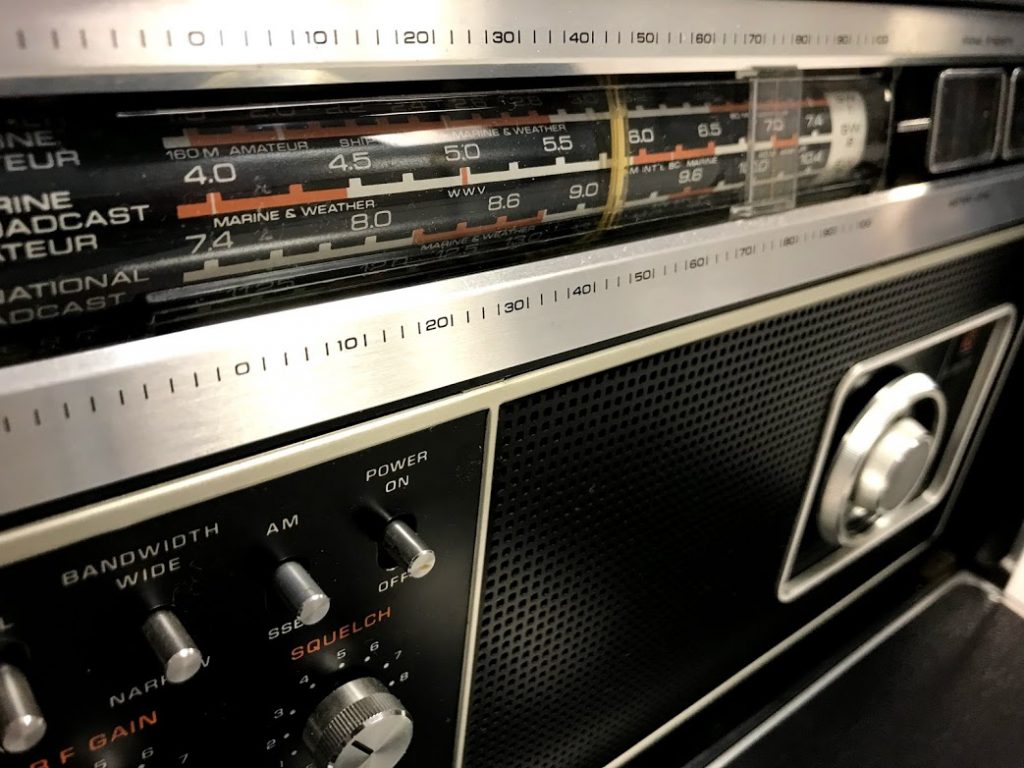 Radio Waves: Stories Making Waves in the World of Radio
Radio Waves: Stories Making Waves in the World of Radio
Because I keep my ear to the waves, as well as receive many tips from others who do the same, I find myself privy to radio-related stories that might interest SWLing Post readers. To that end: Welcome to the SWLing Post’sRadio Waves, a collection of links to interesting stories making waves in the world of radio. Enjoy!
Many thanks to SWLing Post contributors Marty, David Iurescia (LW4DAF), and Phillip Novak for the following tips:
Radio Bulgaria to resume its audio broadcast (Bulgarian National Radio)
“Radio Bulgaria needs to resume its sound presence and we are to work together with the team, in order to build a firm concept in this direction.” This was what BNR Director General Andon Baltakov said in his first interview with Radio Bulgaria.
On the eve of Radio Bulgaria’s 84th anniversary, which is celebrated on February 16, 2020, Mr. Baltakov said that broadcasts of the National Radio aimed for foreign countries would be modernized, but would preserve their philosophy – being Bulgaria’s window to the world and vice versa. You can read the whole interview here. […]
Radio aids revival of dying tribal language (The Hindu)
Tucked away in the hills of Jharkhand’s Latehar district, Asur, a particularly vulnerable tribal group, may not have access to good road or means of transportation to the outside world, but that has not deterred them from saving their language. Using mobile radio, the Asur community has been spreading the popularity of the language within their geographical limits.
As the voice Dahan-Dahan Turrarr .. Dang T inatang Turrarr.. Noa Hake Asur Akhada Radio Enegabu Degeabu Siringabu Urrarr (Come, sing, dance and talk.. This is Asur Centre Radio) is played out through loud speakers, the bustle at the weekly market at Kotia seizes briefly, as people turn their attention to the sound system that transmits songs and news transmitted in their native language.
Attention of the Asur tribals assembled at the market is immediately diverted to the sound system that transmits songs, news and information about government schemes — all in their native dialect.
[…]“The initiative has got a huge response from people. Now, villagers are requesting us to organise events at their places and they are also interested in preparing radio programmes,” said Ms. Tete.
“When we started working on languages, we focused on five tribal and four regional languages. Then we realised that the bigger groups can take care of their own languages, but smaller communities need help,” said Ms .Tete.
[…]Youth from the community are also being encouraged to write poems in their language and older ones narrate their experience in their own language.[…]
FCC Digital Sign Compliance (International Sign Association)
The U.S. Federal Communications Commission (FCC) continues to cite businesses because digital signs are interfering with the wireless spectrum, creating problems with commercial and public wireless devices. This may occur because the signs are operating at Electro Magnetic Interference (EMI) levels not allowed under U.S. federal law and in violation of FCC regulations.
Click here for frequently asked questions to better understand these issues.[…]
How To: Surface Mount Soldering (Nuts & Volts)
Some people tend to shy away from using surface-mount components in their projects. It seems to be too difficult or needs an array of specialized equipment. In the past, I found myself in this same mindset — wary of using these types of parts. That all changed when I got involved with an open source motor controller project (OSMC).
It used a mix of surface-mount and through-hole components. I took the plunge and built up a pair of OSMC H-bridge boards and the MOB (Modular OSMC Brain) controller board which I used in the Battlebot Crash Test Junior.
At the time, there was little information available on how to mount these parts using an ordinary soldering station and tools that most hobbyists would have on hand. Not wanting to invest in a whole new set of tools (hot air stations, etc.), I experimented a bit and used common sense techniques to get the job done. A point I’d like to stress is the myth about requiring anything exotic to work with most surface-mount parts. I don’t own or use any special soldering equipment for this. All of the soldering that I’ve done on surface-mount boards is built with an old Weller WTCPT station and TC201 soldering iron. It has the fine tip that came standard on it. If you happen to have access to specialized tools, go ahead and use them but you still may find these tips helpful. It has been my experience that depending upon your techniques, you can get by just fine in most instances without specialized tools.[…]
Turn Your Computer’s Sound Card Into A Scope (Nuts & Volts)
I’ve been using an oscilloscope for almost 50 years. It’s my go-to measurement instrument in every electronics project I work on, helping me debug and fine-tune hardware and software projects.
In this article, I’ll show how you can get started with a simple-to-use scope you probably already have. Best of all, it’s free! When you graduate from this simple scope, you can purchase a more powerful scope using the exact same user interface.
Full disclosure: I love scopes so much, 10 years ago, I joined Teledyne LeCroy — the third largest scope manufacturer in the world behind Tektronix and Keysight. However, I use the Digilent Analog Discovery 2 Scope (described in this article) in all my hobby activities and in the workshops I teach at Tinkermill — our hackerspace in Longmont, CO.
I think the free scope control software, Waveforms, is the simplest to use, most feature-rich pro-level software of any of the available options. Using a sound card as the hardware interface with Waveforms puts a simple — yet powerful — scope in your hands for free.[…]
Do you enjoy the SWLing Post?
Please consider supporting us via Patreon or our Coffee Fund!
Your support makes articles like this one possible. Thank you!
Radio Waves: New BBC Ham, Russian Propaganda, Rotators, USB Continuity, and a Moment of Silence
Radio Waves: Stories Making Waves in the World of Radio
Because I keep my ear to the waves, as well as receive many tips from others who do the same, I find myself privy to radio-related stories that might interest SWLing Post readers. To that end: Welcome to the SWLing Post’sRadio Waves, a collection of links to interesting stories making waves in the world of radio. Enjoy!
Many thanks to SWLing Post contributors, Marty, Mike Terry, and Tracy Wood for the following tips:
BBC World Service presenter is a radio amateur (Southgate ARC)
Gareth Mitchell M7GJM is well known as presenter of the BBC World Service show Digital Planet. He got his amateur licence in 2019 thanks to help from members of Essex Ham
Since getting his licence, Gareth M7GJM has been mentioning amateur radio in his BBC World Service show, most recently, featuring how radio hams in Australia have been helping with emergency comms.
Read the Essex Ham story at
https://www.essexham.co.uk/news/online-learning-and-exam.htmlInformation on the free Foundation Online course that Gareth took is at
https://www.essexham.co.uk/train/foundation-online/
Russian ‘Propaganda Machine’ Selects Kansas City As Its Second Radio Broadcast Site (KCUR)
Commuters interested in conspiracy theories about George Soros, Hillary Clinton and the Republican National Committee have a new option, courtesy of the Russian government.
Early this month, a radio station based in Liberty, Missouri, signed a three-year deal to broadcast Radio Sputnik across Kansas City.
The English-language programming airs for three hours each morning and again in the evening on three frequencies controlled by KCXL: 1140 AM, 102.9 FM and 104.7 FM.
It’s produced by the U.S.-based branch of an organization created in 2013 by Russian President Vladimir Putin to promote Russian interests abroad.
The organization, Rossiya Segodnya, hopes to restore a “fair attitude to Russia in every country in the world,” according to court records.
For now, Radio Sputnik only broadcasts in two American cities: Kansas City and Washington D.C., where its programming has aired since 2017.
“We’d love to broadcast in all major U.S. markets,” a Radio Sputnik spokesperson told KCUR via email. “But unfortunately, U.S. authorities are working really hard to prevent us from doing so.”[…]
Rotators – How do you turn that thing? (Nuts and Volts)
We’ve had a few columns on antennas and propagation, and there sure is a lot of variation in the types of antennas! All the different ways signals propagate require different antenna directions and types. Hams use dinky finger-sized “rubber ducks” on handheld radios but also some ridiculously big antennas it seems. Hams can’t use as much power as some of the other communication services, so they use antennas to get through by focusing radiated power.
If the antennas can focus a signal, then they need to be able to focus it in the desired direction, right? A few antennas can do that electrically by controlling the signal’s phase or switching antenna elements on and off. Most of the “pointable” ham antennas, though, need to be pointed mechanically and held in place during a contact or to keep a communications link working. The thing that hams use to point their antennas — large and small — is called a rotator.
There are a wide range of rotators, just like antennas. You may have used a TV antenna rotator with its “chunk-chunk-chunk” stepping. At the other end of the scale, whole towers turn! We’ll cover some of the most common types and give you an idea of how they work. (If you want detailed information, including guidelines and illustrations for how to work with these unsung heroes of the antenna farm, see the sidebar, “Rotator and Tower Know-How.”)
Build a USB continuity jig (Nuts and Volts)
If you’re like me, you likely have a drawer or shoebox stuffed with assorted USB cables that are used to either charge or program a USB device. The problem often is that some cables may only be useful for charging, and which only have the +Vcc and ground wires intact with one or both data wires either broken or not connected in the first place.
Every Radio Station in Los Angeles Holds Moment of Silence for Kobe Bryant (Billboard)
Los Angeles has been rendered speechless by the shocking death of NBA legend Kobe Bryant, his 13-year-old daughter Gianna “Gigi” Bryant, and seven others in a helicopter crash in Calabasas, Calif., on Sunday morning. And for one minute and eight seconds — the extra time nodding to Bryant’s original No. 8 Lakers jersey — radio stations across the city held a moment of silence Monday (Jan. 27) at noon.
The Southern California Broadcasters Association asked its members to synchronize their moment of silence, as well as continuously airing reminders about the upcoming tribute.
Before noon, the SCBA requested all local area radio stations to repeat this core introductory message for grieving Angelenos listening in: “Right now All LA radio stations are now broadcasting 1:08 minute silence for LA Sports Legend Kobe Bryant,” according to an announcement posted on the association’s website.[…]
Do you enjoy the SWLing Post?
Please consider supporting us via Patreon or our Coffee Fund!
Your support makes articles like this one possible. Thank you!
Understanding decibels
Many thanks to SWLing Post contributor, Marty, who shares the following article from Nuts and Volts magazine–a primer on decibels:
The “dee-bee” is everywhere in ham radio, and is used for characterizing everything from antenna performance to nano-sized signals. Learn the decibel (abbreviated as lower-case ‘d’ followed by an upper-case ‘B’ or ‘dB’) and you and your signal will go a long way!
From the ARRL Ham Radio License Manual’s online math tutorials for beginning hams (arrl.org/chpt-2-radio-signal-fundamentals), we introduce the decibel. “You have probably recognized deci as the metric prefix that means one-tenth. The unit we are really talking about here is the bel (a ratio of sound levels named for Alexander Graham Bell), so a decibel is just 1/10th of a bel. We use a decibel instead of a whole bel because the bel represents a rather large change in levels. The dB is a just-perceptible change and more useful as a unit of measurement.” As used in wireless, the decibel is the ratio of two power levels:
dB = 10 log10 (P2/P1)
Note that the dB has no units because it is a ratio. The dB is just a number that describes how much bigger or smaller one quantity is compared to the other. Both quantities themselves must have the same base units, though — watts, for example. If P2 is larger than P1, the dB value is positive, such as for amplifier gain. If P2 is less, the value is negative and represents attenuation or loss. (Somewhat confusingly, it’s common to specify an amount of attenuation as a positive value of dB. For example, “This filter attenuates the signal by 20 dB.”)

